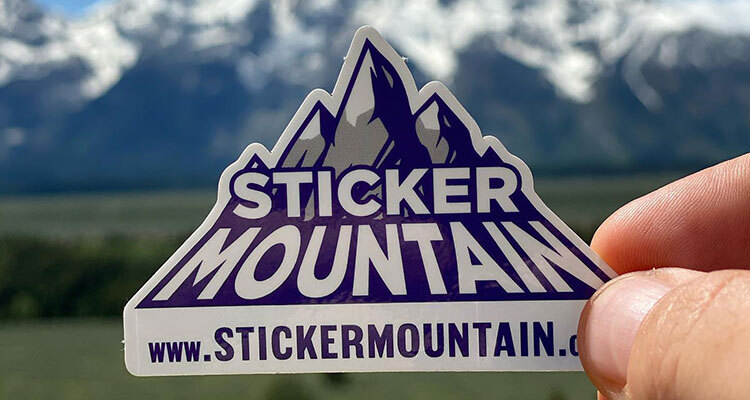How 2024’s trends in personalization and storytelling are redefining brand engagement
Amber McConnell delves into the future of brand engagement, highlighting how trends in personalization and storytelling are revolutionizing label design and fostering deeper connections between brands and consumers in an ever-evolving marketplace.
In today’s marketplace, the line between simply buying a product and investing in what a brand stands for has blurred. This evolution magnifies the pivotal role of label design within the food and beverage sector. As Americans navigate the challenges of food inflation, allocating more than 11 percent of disposable income toward food, a peak not seen in three decades, the stakes for effective labeling have soared. Amid escalating prices for groceries and dining out, a meticulously designed label acts as your brand’s herald, conveying your philosophy and distinctiveness at a glance.
The sway of label design on consumer choices is undeniable. Research shows that the allure of packaging has led a majority of shoppers to experiment with new products. This underscores the influence of inventive, strategy-driven label design, a domain poised for further growth in 2024 as digital innovations become more intertwined with industry practices. Advanced digital printing technologies are revolutionizing how brands engage consumers, offering unprecedented flexibility, customization, and interaction.
Consumer expectations and market dynamics

The call for products that mirror environmental stewardship is pushing brands toward greener materials and methods. Committing to sustainability means opting for recyclable materials and adopting printing techniques that reduce waste. Such initiatives not only lessen environmental harm but also align with the values of eco-conscious shoppers, fostering brand loyalty and trust.
Take Sticker Mountain as an exemplar: Our commitment to using FSC-certified paper underlines our dedication to sustainable forest management and environmental preservation. This approach supports water conservation and wildlife protection while aligning with our customers’ values of responsibility and integrity.
Regulatory compliance and safety
In the complex world of regulatory compliance, accuracy and visibility of essential information are paramount for consumer safety and brand credibility. A label that clearly displays product identity, ingredients, manufacturer details, and health advisories reflects a brand’s dedication to transparency. Employing premium materials and advanced printing techniques is crucial for preserving this information’s integrity, ensuring consumer safety from shelf to home.
Transparent, informative labeling is crucial for building consumer trust, and minimalism is the continuing reigning trend in branding – emphasizing clean lines, simple color palettes, and spacious layouts. Yet, within this simplicity, brands are making audacious statements through typography. Innovative and expressive fonts are becoming pivotal in captivating consumer attention, leaving a lasting visual impression. The synergy of minimalist aesthetics and striking typography, coupled with digital advancements, offers a harmonious balance that enables consumers to make quick, informed decisions.
Emerging trends: storytelling and personalization
The realms of storytelling and personalization in label design have become more than just trends – they are essential components that cater to the contemporary consumer’s desire for authenticity and connection. Today’s market is all about the experience, the narrative, and the personal touch that comes with it. Brands that master the art of storytelling and personalization in their labels are setting new standards for consumer engagement and loyalty.
Storytelling in label design is about weaving a narrative that resonates with consumers on an emotional level. Whether it’s the journey of how a product is made, the heritage of the brand, or the impact of purchasing the product on the community or environment, these stories create a bond between the consumer and the product. For instance, a label detailing the artisanal process behind a craft beer, or the sustainable farming practices of a coffee brand can inspire consumers, making them feel part of a larger story and purpose.
This narrative approach is about much more than text. Visual elements, colors, and design motifs play a crucial role in storytelling. They can evoke feelings of nostalgia, luxury, simplicity, or innovation, depending on the story the brand wishes to tell. By striking the right chord, brands can transform a simple purchase into a memorable experience, encouraging loyalty and advocacy.
Personalization and interactive technologies
Personalization in label design is evolving, powered by technologies like QR codes and augmented reality (AR). These technologies transform static labels into gateways for a dynamic, personalized interaction with the brand.
QR codes can direct consumers to a website where they can learn more about the product, sign up for exclusive offers, or even customize their next purchase. AR labels take this a step further by overlaying digital information on physical products, offering interactive experiences such as virtual tours of the production process, how-to-use videos, or even gamified content that entertains while it informs.
These interactive labels cater to the modern consumer’s expectation for immediacy and engagement. They offer a level of personalization that goes beyond the physical product, allowing consumers to interact with brands on their terms, when and where it suits them. This direct line of communication can foster a deeper sense of loyalty and a personal connection with the brand, turning a one-time purchase into a long-term relationship.
The future of engagement
The integration of storytelling and personalization in label design is evolving, with innovations like personalized QR codes that offer a tailored experience by remembering consumer preferences. This could range from suggesting food pairings with a wine label to greeting consumers by name. Additionally, the advent of accessible AR technology promises more immersive experiences, such as visualizing the origin of a product, like the grove where olives for olive oil were harvested, complete with narratives from the farmers.
This progression in label design underscores a shift in how consumers interact with brands, paving the way for deeper connections through engaging and personalized experiences. By leveraging these trends, brands can forge lasting relationships with their audience, offering experiences that resonate more profoundly. The future of label design holds limitless potential for engagement, driven by the creativity and innovation of brands looking to make a significant impact.
Sustainability beyond materials
Don’t forget about sustainability. While the use of eco-friendly materials is vital, forward-thinking brands are exploring broader sustainability practices in labeling. This includes reducing label size to minimize waste, using eco-friendly inks, and implementing zero-waste manufacturing processes. Such comprehensive sustainability efforts reduce environmental impact and resonate with the growing consumer demand for holistic eco-consciousness in their purchasing choices.
As we delve deeper into 2024, it’s clear that the realms of sustainability, minimalist design, technological integration, personalization, regulatory compliance, and sensory engagement will define the future of food and beverage labeling. Keeping pace with these trends is essential for brands aiming to thrive in a competitive and ever-evolving industry landscape. Through strategic design, a commitment to sustainability, and adherence to regulatory standards, brands can not only meet but surpass consumer expectations, cementing their status in the market.
For a list of the sources used in this article, please contact the editor.
Amber McConnell
Amber McConnell, the dynamic owner of Sticker Mountain, combines academic rigor with passionate entrepreneurship to make a significant impact in the printing industry as part of the family business. Her extensive experience and innovative approach have propelled Sticker Mountain to new heights, showcasing her deep commitment and expertise in the field. With a rich background that includes a double major in psychology and criminal justice from Regis University, and a lifelong commitment to athletics, Amber’s dedication to excellence shines through in her work. At Sticker Mountain, she leverages her diverse skills and personal interest in coaching to innovate and inspire, driving the company to new heights with a keen eye for quality and community connection.
